-
Snake robots learn to turn by emulating real sidewinders
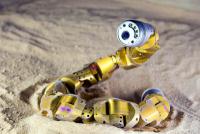
Researchers who develop snake-like robots have picked up a few tricks from real sidewinder rattlesnakes on how to make rapid and even sharp turns with their undulating, modular device. Working with colleagues at the Georgia Institute of Technology and Zoo Atlanta, they have analyzed the motions of sidewinders and tested their observations on snake robots. They showed how the complex motion of a sidewinder can be described in terms of two wave motions — vertical and horizontal body waves — and how changing the phase and amplitude of the waves enables snakes to achieve exceptional maneuverability.
-
-
New plant growth technology may alleviate climate change, food shortage
A research team has developed a new strategy to promote plant growth and seed yield by 38 percent to 57 percent in a model plant Arabidopsis thaliana, hence increasing CO2 absorption from the atmosphere. This technology may also have potential in boosting food production and thus could solve another danger of human civilization: food shortage due to overpopulation.
-
-
Coming El Nino could replenish Calif.’s aquifers – or ravage vulnerable infrastructure
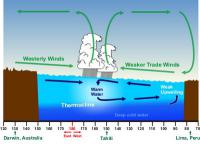
When respected climatologists describe this winter’s warming of tropical Pacific waters as a Godzilla El Nino event, they might be onto something. The science fiction monster’s signature move is to emerge from the ocean and destroy structures built by hapless humans. Many of the necessary plot elements are in place for El Nino to similarly wreak havoc in the Golden State in the coming months, says an expert.
-
-
Humanity has become a geological force: Scientists

Humanity has become a geological force which is able to suppress the beginning of the next ice age, a study now published in the renowned scientific journal Nature shows. “Like no other force on the planet, ice ages have shaped the global environment and thereby determined the development of human civilization. For instance, we owe our fertile soil to the last ice age that also carved out today’s landscapes, leaving glaciers and rivers behind, forming fjords, moraines and lakes. However, today it is humankind with its emissions from burning fossil fuels that determines the future development of the planet,” says one expert.
-
-
Freshwater vulnerability threatens developing nations' stability
Many nations and regions already facing uncertain political futures must contend with a growing threat to stabilization: freshwater vulnerability. An analysis of 119 low-income countries finds common challenges that could inform broad solutions.
-
-
With plutonium-238 sample, ORNL restores U.S. capability dormant for nearly thirty years

With the production of fifty grams of plutonium-238, researchers at the Department of Energy’s Oak Ridge National Laboratory have restored a U.S. capability dormant for nearly thirty years and set the course to provide power for NASA and other missions. There are currently only thirty-five kilograms, or about seventy-seven pounds, of plutonium-238 set aside for NASA missions, and only about half of this supply meets power specifications. This is only sufficient to power two to three proposed NASA missions through the middle of the 2020s.
-
-
Carbon in water must be accounted for in future climate projections
U.S. Geological Survey (USGS) scientists have documented that the carbon that moves through or accumulates in lakes, rivers, and streams has not been adequately incorporated into current models of carbon cycling used to track and project climate change.
-
-
Global learning required to prevent carbon capture, storage from being abandoned
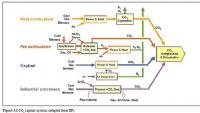
Governments should not be abandoning carbon capture and storage, argues a Cambridge researcher, as it is the only realistic way of dramatically reducing carbon emissions. Instead, they should be investing in global approaches to learn what works – and what doesn’t.
-
-
What makes a “smart gun” smart?

Throughout the 20-year-long discussion of “smart guns,” the topic has been a lightning rod for debate between pro- and anti-gun lobbies. But too often, there isn’t substantive knowledge of the underlying technologies, their appropriate use and their design limitations. Personalized weapons technology can make a contribution to reducing death and injury from accidental or unauthorized weapons use. It is not a panacea, but it can be an option for gun buyers to ensure their weapons never fall into the wrong hands. Smart guns are not science fiction and could be a commercial reality much sooner than later.
-
-
The impact of rising sea levels on Rhode Island
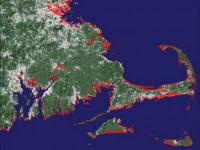
Climate change will bring profound changes to Rhode Island’s coastal communities in the coming decades. Scientists project sea levels to rise 3 to 5 feet in the state by 2100, and recent government projections are as high as 7 feet. Now, University of Rhode Island students are studying one community that could be hit especially hard: Matunuck. The year-long analysis by eight senior ocean engineering students is so thorough that flooding projections were made for specific structures —709 to be exact. Those home and business owners will be able to find out what could happen to their buildings during a powerful storm with rising sea levels up to five feet.
-
-
Dawn of the Anthropocene: five ways we know humans have triggered a new geological epoch
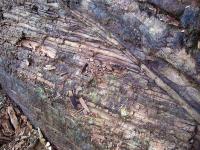
Is the Anthropocene real? That is, the vigorously debated concept of a new geological epoch driven by humans. Our environmental impact is indeed profound — there is little debate about that — but is it significant on a geological timescale, measured over millions of years? And will humans leave a distinctive mark upon the layers of rocks that geologists of 100,000,000AD might use to investigate the present day? The human-driven changes to the Earth’s environment are comparable in scale to those of earlier epochs. The extraordinarily wide range of geological signals associated with the Anthropocene means comparison with earlier epochs is not straightforward, but the evidence indicates an overall magnitude of change at least as large as that which ushered in the Holocene, our current geological epoch, and most other epochs. It means that humans are moving the Earth system from the comparative environmental stability of the Holocene into a new, evolving planetary state. And the impact will be felt by all human generations to come.
-
-
Record December boosted 2015 to second warmest year for contiguous U.S.

The 2015 annual average U.S. temperature was 54.4°F, 2.4°F above the twentieth century average, the second warmest year on record. Only 2012 was warmer for the United States with an average temperature of 55.3°F. This is the nineteenth consecutive year the annual average temperature exceeded the twentieth century average. The first part of the year was marked by extreme warmth in the West and cold in the East, but by the end of 2015, record warmth spanned the East with near-average temperatures across the West. This temperature pattern resulted in every state having an above-average annual temperature.
-
-
The Anthropocene: Hard evidence for a new, human-driven geological epoch
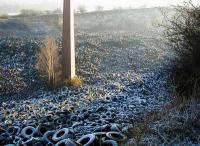
The evidence for a new geological epoch which marks the impact of human activity on the Earth is now overwhelming, according to a recent paper by an international group of geoscientists. The Anthropocene, which is argued to start in the mid-twentieth century, is marked by the spread of materials such as aluminum, concrete, plastic, fly ash, and fallout from nuclear testing across the planet, coincident with elevated greenhouse gas emissions and unprecedented trans-global species invasions. The researchers set out to anser this question: To what extent are human actions recorded as measurable signals in geological strata, and is the Anthropocene world markedly different from the stable Holocene Epoch of the last 11,700 years which allowed human civilization to develop?
-
-
Professor fired for saying Muslims and Christians worship same God

Dr. Larycia Hawkins, a teacher of political science at Wheaton College in Illinois who has lost her job after claiming that Muslims and Christians worshipped the same God, has responded to her dismissal, saying she was “flummoxed and flabbergasted” by the decision to fire her. The college initiated termination proceedings, saying Hawkins had refused to take part in “clarifying conversations” about the theological issues raised by her comments.
-
-
Drought, heat deleterious for global crops

Drought and extreme heat slashed global cereal harvests between 1964 and 2007 — and the impact of these weather disasters was greatest in North America, Europe, and Australasia. At a time when global warming is projected to produce more extreme weather, a new study provides the most comprehensive look yet at the influence of such events on crop area, yields, and production around the world.
-
More headlines
The long view
A Shining Star in a Contentious Legacy: Could Marty Makary Be the Saving Grace of a Divisive Presidency?
While much of the Trump administration has sparked controversy, the FDA’s consumer-first reforms may be remembered as its brightest legacy. From AI-driven drug reviews to bans on artificial dyes, the FDA’s agenda resonates with the public in ways few Trump-era policies have.
Risk Assessment with Machine Learning
Researchers utilize geological survey data and machine learning algorithms for accurately predicting liquefaction risk in earthquake-prone areas.
Foundation for U.S. Breakthroughs Feels Shakier to Researchers
By Max Larkin
With each dollar of its grants, the National Institutes of Health —the world’s largest funder of biomedical research —generates, on average, $2.56 worth of economic activity across all 50 states. NIH grants also support more than 400,000 U.S. jobs, and have been a central force in establishing the country’s dominance in medical research. Waves of funding cuts and grant terminations under the second Trump administration are a threat to the U.S. status as driver of scientific progress, and to the nation’s economy.
The True Cost of Abandoning Science
By Steven R. Furlanetto
“We now face a choice: to remain at the vanguard of scientific inquiry through sound investment, or to cede our leadership and watch others answer the big questions that have confounded humanity for millennia —and reap the rewards.”
Bookshelf: Smartphones Shape War in Hyperconnected World
By Kathryn Brimblecombe-Fox
The smartphone is helping to shape the conduct and representation of contemporary war. A new book argues that as an operative device, the smartphone is now “being used as a central weapon of war.”
New Approach Detects Adversarial Attacks in Multimodal AI Systems
New vulnerabilities have emerged with the rapid advancement and adoption of multimodal foundational AI models, significantly expanding the potential for cybersecurity attacks. Topological signatures key to revealing attacks, identifying origins of threats.
